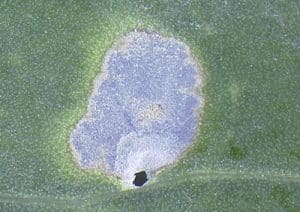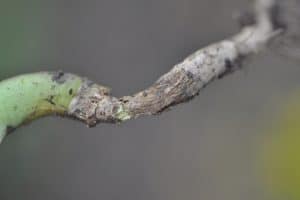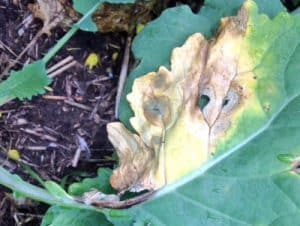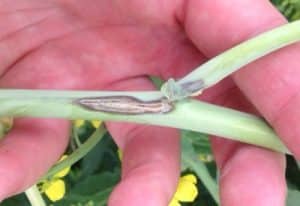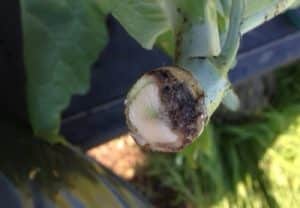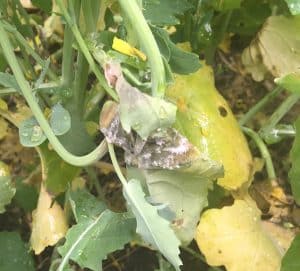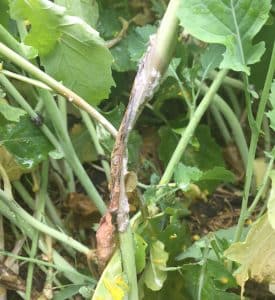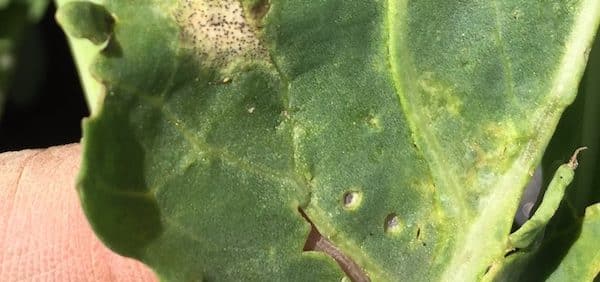Finding lesions on leaves and stems and wonder about the cause? Use these pointers to match lesions with their disease. When scouting, have a hand lens handy — preferably one with at least 10x magnification.
The problem with identifying lesions now, from a management perspective, is that once infection starts, it is too late for a fungicide — except for extreme alternaria black spot. Fungicide is rarely required for alternaria on B. napus canola, but the disease may be a bit more common this year with the wet and humid conditions. If conditions stay wet, a fungicide could help to stop the disease from moving up the plant to pods.
Blackleg. Blackleg lesions may occur on cotyledons, leaves, stems and pods. Leaf spots are dirty white, round to irregularly shaped, and usually dotted with numerous small, black pycnidia. Pycnidia appear as tiny round specks that may be seen more easily with the aid of a hand lens. Under moist weather conditions, a viscous pink liquid carrying the pycnidiospores oozes from the pycnidia. With enough time, infection will spread to the base of the stem and cut off the plant— which is why early infection tends to be the most damaging to yield. Note that damage due to hail and insect feeding may provide an open wound where the pathogen can successfully establish, resulting in infection and lesion development. More on blackleg symptoms.
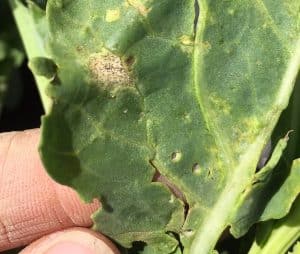
Sclerotinia stem rot. Petals infested with sclerotinia spores land on a leaf or stem and begin to rot, starting the infection cycle. The result is a soft watery light-brown lesion that may roughly outline the pattern of the petal. As lesions expand, they become greyish white and may have faint concentric markings. Infection will spread to stems, causing them to whiten and become brittle. More on sclerotinia stem rot symptoms.
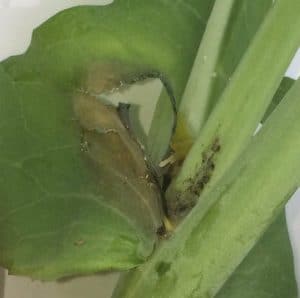
Alternaria black spot. Lesions are usually brown to blackish with yellow halos around them. They start as spots (1mm) and as they grow often appear as alternate circular zones of brown and dark brown surrounded by a yellow halo. Alternaria lesions can grow to 20mm (just under 1”) across. Note that lesion colour can vary from typical brown — being entirely grey under moist conditions, and grey with a purplish or black border or entirely black under less favourable conditions. Alternaria lesions can multiply rapidly and later spread to the upper leaves, stem and pods. On severely infected leaves, several lesions can unite to cause defoliation under humid conditions. More on alternaria black spot symptoms.
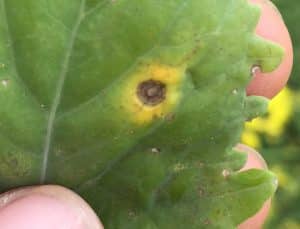
Not necessarily a disease. Window-paning from diamondback moth larvae can look like a lesion, especially at early stages. Tiny first instars feed inside the leaves, consuming the green material and leaving the clear membrane behind. The real concern with diamondback moth larvae is pod feeding.
